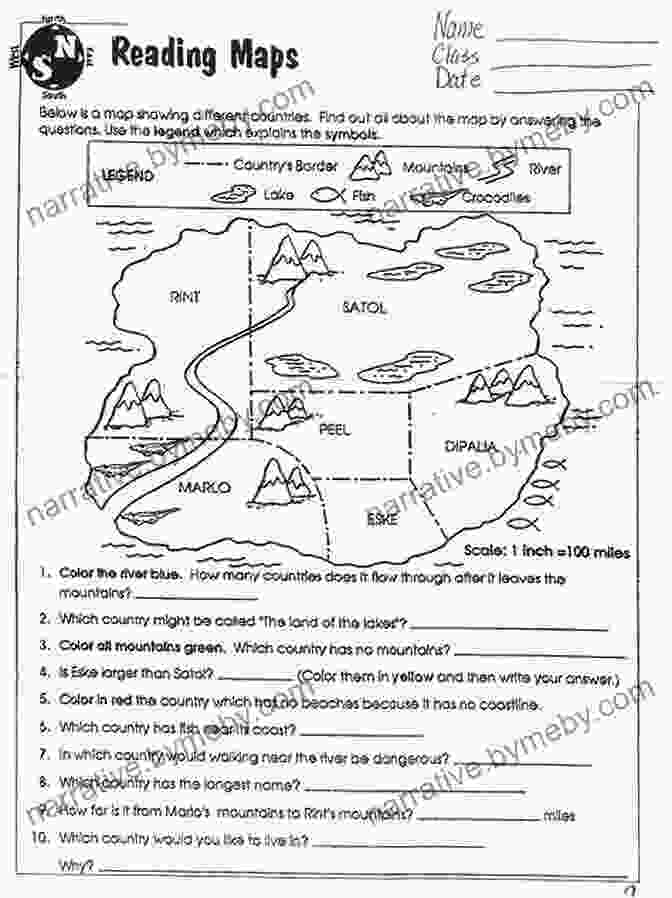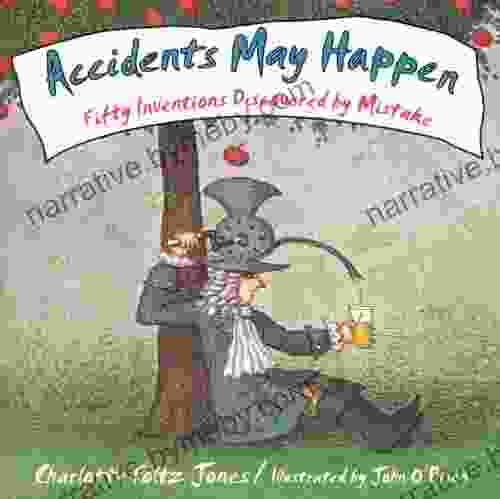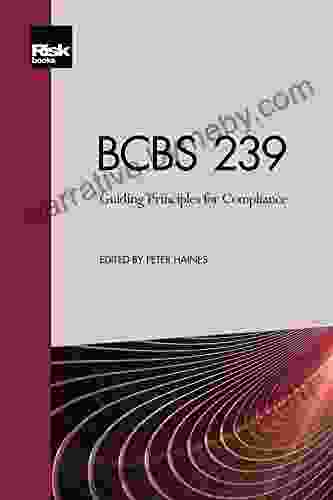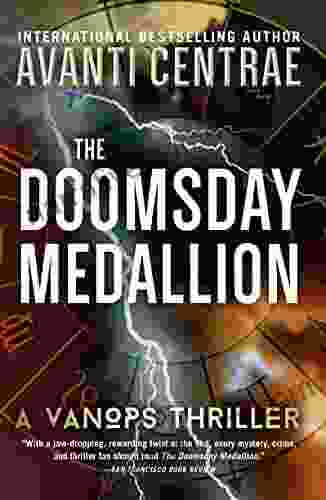My GPS Won't Work! A Quick Guide to Reading Maps for Social Studies Grade Children

In today's world, it's easy to rely on GPS to get us where we need to go. But what happens when our GPS fails us? Or what if we're in an area where there's no cell phone service? That's where knowing how to read a map comes in handy.
This quick and easy guide will teach your child the basics of map reading, including how to identify different types of maps, use map scales, and interpret map symbols. With this knowledge, your child will be able to navigate the world with confidence, even if their GPS fails them.
4.6 out of 5
| Language | : | English |
| File size | : | 41473 KB |
| Screen Reader | : | Supported |
| Print length | : | 72 pages |
Chapter 1: What is a Map?
A map is a representation of the Earth's surface, or a part of it. Maps can be used to show a variety of information, including:
- Physical features, such as mountains, rivers, and lakes
- Political boundaries, such as countries, states, and cities
- Transportation routes, such as roads, railroads, and airports
- Land use, such as forests, farmland, and urban areas
Maps can be used for a variety of purposes, including:
- Navigation
- Planning trips
- Studying history
- Understanding current events
- Making informed decisions
Chapter 2: Different Types of Maps
There are many different types of maps, each designed to show a specific type of information. Some of the most common types of maps include:
- Topographic maps show the physical features of an area, such as mountains, rivers, and lakes. These maps are often used for hiking, camping, and other outdoor activities.
- Political maps show the political boundaries of an area, such as countries, states, and cities. These maps are often used for studying history and current events.
- Road maps show the transportation routes of an area, such as roads, railroads, and airports. These maps are often used for planning trips.
- Land use maps show the land use of an area, such as forests, farmland, and urban areas. These maps are often used for planning land use and development.
- Thematic maps show a specific theme, such as population density, climate, or economic activity. These maps are often used for research and analysis.
Chapter 3: Map Scales
A map scale is a ratio that shows the relationship between the distance on the map and the distance on the ground. Map scales can be expressed in a variety of ways, including:
- Fraction (e.g., 1/24,000)
- Representative fraction (e.g., 1:24,000)
- Verbal scale (e.g., one inch equals one mile)
- Graphic scale (a line or bar that represents a specific distance on the ground)
It is important to understand the map scale in Free Download to use a map accurately. For example, a map with a scale of 1:24,000 means that one inch on the map represents 24,000 inches on the ground. This information can be used to determine the distance between two points on the map, or to calculate the area of a particular feature.
Chapter 4: Map Symbols
Map symbols are used to represent different features on a map. These symbols can vary from map to map, but there are some basic symbols that are commonly used. Some of the most common map symbols include:
- Points: Points are used to represent small features, such as cities, towns, and landmarks. Points are typically represented by a dot or a small circle.
- Lines: Lines are used to represent linear features, such as roads, rivers, and railroads. Lines are typically represented by a thin line.
- Areas: Areas are used to represent large features, such as forests, lakes, and mountains. Areas are typically represented by a color or a pattern.
It is important to understand the map symbols in Free Download to use a map effectively. For example, the symbol for a city might be a dot, while the symbol for a river might be a blue line. By understanding the map symbols, you can quickly and easily identify the different features on a map.
Chapter 5: Putting It All Together
Now that you have learned the basics of map reading, you are ready to put it all together. The next time you need to use a map, follow these steps:
- Identify the type of map. This will help you determine what kind of information the map is showing.
- Determine the map scale. This will help you determine the distance between two points on the map, or to calculate the area of a particular feature.
- Identify the map symbols. This will help you identify the different features on the map.
- Use the map to navigate. Once you have a good understanding of the map, you can use it to plan your trip or to find your way around a new area.
With a little practice, you will be able to read maps with confidence. This skill will come in handy in a variety of situations, from planning trips to studying history. So next time your GPS fails you, don't panic! Just grab a map and start navigating.
My GPS Won't Work! is a quick and easy guide to reading maps for social studies grade children. This book teaches children the basics of map reading, including how to identify different types of maps, use map scales, and interpret map symbols. With this knowledge, your child will be able to navigate the world with confidence, even if their GPS fails them.
Free Download your copy of My GPS Won't Work! today!

4.6 out of 5
| Language | : | English |
| File size | : | 41473 KB |
| Screen Reader | : | Supported |
| Print length | : | 72 pages |
Do you want to contribute by writing guest posts on this blog?
Please contact us and send us a resume of previous articles that you have written.
 Book
Book Novel
Novel Page
Page Chapter
Chapter Text
Text Story
Story Genre
Genre Reader
Reader Library
Library Paperback
Paperback E-book
E-book Magazine
Magazine Newspaper
Newspaper Paragraph
Paragraph Sentence
Sentence Bookmark
Bookmark Shelf
Shelf Glossary
Glossary Bibliography
Bibliography Foreword
Foreword Preface
Preface Synopsis
Synopsis Annotation
Annotation Footnote
Footnote Manuscript
Manuscript Scroll
Scroll Codex
Codex Tome
Tome Bestseller
Bestseller Classics
Classics Library card
Library card Narrative
Narrative Biography
Biography Autobiography
Autobiography Memoir
Memoir Reference
Reference Encyclopedia
Encyclopedia Dan Ramsey
Dan Ramsey Aunnie Patton Power
Aunnie Patton Power Atul Gawande
Atul Gawande Patricia Bell Scott
Patricia Bell Scott Finn Brunton
Finn Brunton Barbara Corcoran
Barbara Corcoran Robert Glazer
Robert Glazer Ayad Akhtar
Ayad Akhtar Assata Shakur
Assata Shakur Nageshwar Sah
Nageshwar Sah Ashley Mears
Ashley Mears Brandon P Fleming
Brandon P Fleming Durenda Wilson
Durenda Wilson Barry W Holtz
Barry W Holtz Nancy Claus
Nancy Claus Richard King
Richard King Bryan Wilton
Bryan Wilton Barbara Krumhardt
Barbara Krumhardt Ashley Schmitt
Ashley Schmitt Sarah Retter
Sarah Retter
Light bulbAdvertise smarter! Our strategic ad space ensures maximum exposure. Reserve your spot today!

 Mark TwainEscape into the Thrilling World of "Accidents May Happen" by Charlotte Foltz...
Mark TwainEscape into the Thrilling World of "Accidents May Happen" by Charlotte Foltz...
 Vince HayesRedefine Yourself: Embark on a Transformative Journey with "New Spelling of...
Vince HayesRedefine Yourself: Embark on a Transformative Journey with "New Spelling of... Damon HayesFollow ·13k
Damon HayesFollow ·13k Darius CoxFollow ·4.2k
Darius CoxFollow ·4.2k Grant HayesFollow ·15.7k
Grant HayesFollow ·15.7k Patrick HayesFollow ·13.6k
Patrick HayesFollow ·13.6k Justin BellFollow ·18.9k
Justin BellFollow ·18.9k Ernest ClineFollow ·15.1k
Ernest ClineFollow ·15.1k Floyd PowellFollow ·14.7k
Floyd PowellFollow ·14.7k Ross NelsonFollow ·16.5k
Ross NelsonFollow ·16.5k

 Ian McEwan
Ian McEwanWhy Didn't Anyone Say Anything? Uncovering the Hidden...
By [Author's...

 William Wordsworth
William WordsworthArthurian Legendarians: Faithless One - Part One – A...
In the realm of legendary tales, the...

 Corey Hayes
Corey HayesSSAT ISEE Prep Test: Arithmetic Review Flash Cards Cram...
Are you preparing for the SSAT or ISEE exam?...

 Robert Louis Stevenson
Robert Louis StevensonUnveiling the Essential Guide to Compliance: BCBS 239...
In the ever-evolving...

 Javier Bell
Javier BellJust Peachy: A Tale of Sweetness and Sassiness
Immerse yourself in a...

 Brent Foster
Brent FosterStep-by-Step Instruction Manual to Building a Real Estate...
Are you eager to embark on the...
4.6 out of 5
| Language | : | English |
| File size | : | 41473 KB |
| Screen Reader | : | Supported |
| Print length | : | 72 pages |








